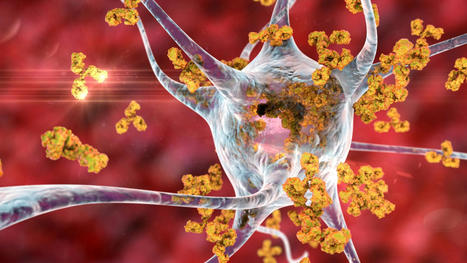Researchers reviewed data on the incidence of autoimmune diseases in the post-acute coronavirus disease 2019 period.
Background
COVID-19 has caused unprecedented morbidity and mortality across the globe. The immune protection conferred by severe acute respiratory syndrome coronavirus 2 (SARS-CoV-2) vaccines and prior COVID-19 history, coupled with developing effective therapeutic agents, has reduced COVID-19-associated mortality. However, post-COVID-19 conditions continue to increase, particularly new-onset autoimmune diseases in COVID-19 convalescents. Autoimmune diseases have been reported following COVID-19 among adults; however, the prevalence and magnitude of the diseases, and the incidence risks among individuals infected with SARS-CoV-2, compared to uninfected individuals, are not well-characterized. Improving understanding of the impact of COVID-19 on the risk of developing post-acute COVID-19 complications, such as autoimmune disease, could aid in implementing preventive measures and initiating prompt treatment to prevent COVID-19-associated morbidities. The findings would also be highly relevant for future pandemics and to analyze the long-term protective effects of COVID-19 vaccines.
About the review
In the review, researchers presented findings of two large-scale cohort studies, evaluating the incidence of autoimmune diseases following acute SARS-CoV-2 infections using participants' electronic medical records.
Evidence on post-COVID autoimmune disease obtained before the studies
Studies comprising pediatric COVID-19 patients suffering from multisystem inflammatory syndrome among children (MIS-C) have indicated that COVID-19 results in dysregulated immunological responses. The clinical manifestations of MIS-C overlap with hyperinflammatory syndromes, including macrophage activation syndrome, Kawasaki disease, and toxic shock syndrome. The pathophysiology of COVID-19-associated immunological dysfunction includes molecular mimicry by SARS-CoV-2 proteins, multiorgan involvement due to the presence of angiotensin-converting enzyme 2 (ACE2) receptors, essential for SARS-CoV-2 entry into host cells, bystander immune cell activation, autoantigen release following SARS-CoV-2-induced tissue damage, superantigen-regulated lymphocyte activation, and epitope spread. Additionally, factors such as genetic susceptibility, age, and comorbidities may contribute to COVID-19 pathogenesis. A previous study comparing the immune responses in SARS-CoV-2 infection and autoimmune disease reported that tissue damage in both conditions is mainly immune-regulated, demonstrated by the presence of anti-nuclear antibodies, anti-Ro/SSA antibodies, and lupus anticoagulant cold agglutinins in both conditions. A retrospective analysis was performed from January 31, 2020, to June 30, 2021, using the Clinical Practice Research Datalink Aurum database, comprising data from 458,147 and 1,818,929 SARS-CoV-2-infected and uninfected adults, respectively, residing in England. A study preprint reported that the incidence of inflammatory bowel disease, psoriasis, and type 1 diabetes was significantly related to COVID-19.
Findings of the two cohort studies assessed post-COVID autoimmune disease
Chang et al. utilized the TriNetX health research network, comprising six million adults across 48 health organizations globally. The propensity score-matched SARS-CoV-2-infected and uninfected groups comprised 887,455 COVID-19 vaccinees each. Post-COVID-19 autoimmune disease incidence was evaluated between January 1, 2020, and December 31, 2021. At six months of follow-up, autoimmune disease incidence was significantly greater in SARS-CoV-2-infected individuals, including systemic lupus erythematosus, rheumatoid arthritis, vasculitis, type 1 diabetes, and inflammatory bowel disease, with adjusted hazards ratios (aHR) of 2.99,2.98, 1.96, 2.68, and 1.78, respectively. Post-COVID autoimmune disease risk was consistent across ages. Tesch et al. conducted a study, yet to be peer-reviewed, to evaluate autoimmune disease risks among 640,701 unvaccinated individuals having polymerase chain reaction (PCR)-confirmed SARS-CoV-2 infections in 2020. The findings showed that COVID-19 patients were 43.0% more likely to acquire autoimmune conditions, within three to 15.0 months of infection, compared to over one million age- and sex-matched uninfected individuals. Among autoimmune diseases, the incidence rate ratio (IRR) values were the highest for vasculitis. Further, among those with prior history of autoimmune diseases, COVID-19 resulted in a 23.0% higher risk of another autoimmune disease. Generally, most autoimmune diseases were not COVID-19-specific; however, an essential aspect of SARS-CoV-2 infection was a considerable rise in the incidence and spectrum of autoimmune diseases following acute COVID-19.
Conclusions
Based on the review findings, COVID-19 elevates autoimmune disease risks. Due to the retrospective study designs, the two cohort studies could not provide a causal association between COVID-19 and autoimmune disease development. However, the temporal relationship with COVID-19 history provides reliable and compelling evidence that COVID-19 is associated with elevated autoimmune disease development risks. Health governments and authorities must conduct future studies on the topic to obtain national data and increase the generalizability of the findings. The definitive mechanisms, including genetic and epigenetic predilection, underlying the association and related pathophysiology are not completely understood. However, further research must be performed using particular gene-deficient experimental animals, bioinformatic analysis, and biological approaches, e.g., analyzing transcriptomic pandemic data to obtain genomic signatures, and host responses to viral triggers must be evaluated.
Research cited published (April 12, 2023) In Nature Reviews Rheumatology:



 Your new post is loading...
Your new post is loading...











buy Xanax Alprazolam
Price: $165.0 – $417.0Buy Xanax Online without prescription
Price: $720.0 $247.0Buy yellow xanax bars online
Price: $200.0 – $600.0Buy Zopiclone online uk
Price: $200.0 – $650.0Endocet for sale online
Price: $180.0 – $450.0Order Acxion Fentermina 30mg
Price: $200.0 – $600.0oxycontin for sale online
Price: $200.0 – $1,000.0phentermine for sale online
tramadol for sale online
Price: $100.0 – $900.0Where to buy Ecstasy Online